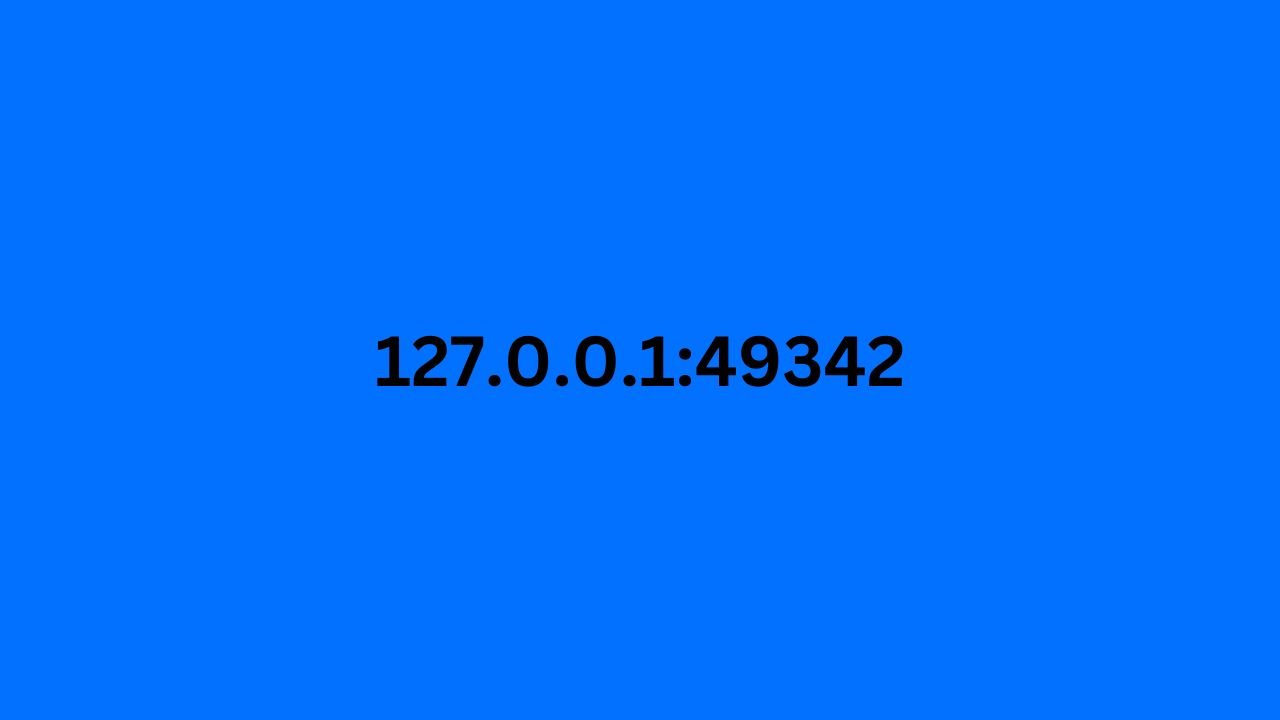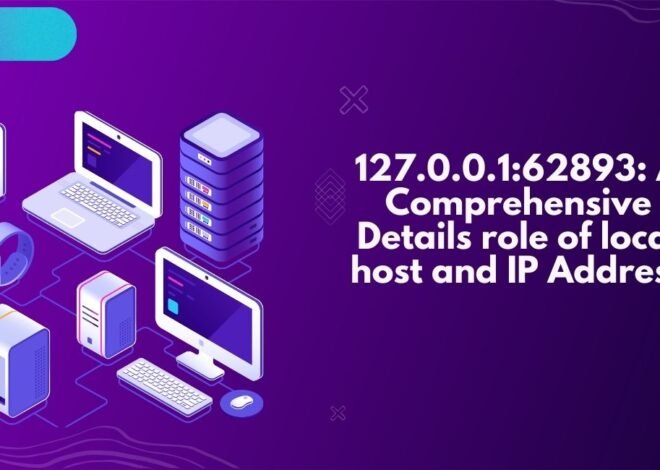
Unveiling the Mystery Behind 127.0.0.1:49342
Have you ever come across the mysterious IP address 127.0.0.1:49342 and wondered what secrets it holds? In this blog post, we delve into the intriguing world of local host addresses and unveil the mystery behind this enigmatic number combination. Get ready to uncover the hidden meanings and unravel the complexities of 127.0.0.1:49342 in all its glory!
Introduction to 127.0.0.1:49342
Have you ever stumbled upon the enigmatic code 127.0.0.1:49342 and found yourself intrigued by its mysterious allure? Join us on a journey to unveil the secrets behind this cryptic combination of numbers that has piqued the curiosity of tech enthusiasts worldwide. Let’s unravel the mysteries together!
Explanation of the numbers and their significance
Have you ever come across the mysterious code 127.0.0.1:49342 while browsing the web or setting up your network settings? At first glance, it may seem like a random string of numbers and symbols, but each digit holds significance in the world of networking.
The number 127.0.0.1 is known as the loopback address, which allows a device to send information back to itself for testing purposes without having to connect to an external network. It’s often referred to as the “localhost” or home address for a computer.
In this unique sequence, each set of digits represents different components – 127 is the IPv4 reserved prefix for loopback addresses, while 0.0.1 signifies that it is addressing itself within its own system.
Now let’s unravel the mystery behind that colon and numbers that follow after – in this case, :49342 could represent a specific port number used for communication between applications on a device.
Understanding these numbers can give you insight into how data travels within networks and how devices communicate with one another seamlessly through IP addresses like 127.0.0.1:49342!
Why it is known as a mysterious code?
The combination of numbers 127.0.0.1:49342 has garnered a reputation for being shrouded in mystery within the tech realm. Its enigmatic aura stems from its association with local host connections and the uncommon port number 49342, sparking curiosity among enthusiasts and professionals alike.
This seemingly cryptic code holds significance due to its role in facilitating communication between devices on a network, serving as a gateway for data exchange within systems. The amalgamation of these digits represents a unique identifier crucial for establishing connections and enabling seamless information flow.
Despite its obscurity to some, delving into the intricacies of 127.0.0.1:49342 unveils a world of networking protocols and intricacies that underscore the backbone of modern digital infrastructure – making it an intriguing subject worth exploring further by those keen on unraveling its secrets.
Read More: Unveiling the Latest Crazyjamjam Fanfix Leaks: A Deep Dive into the Juicy Details
Understanding the Basics of IP Addresses
IP addresses are like digital postcodes that help devices communicate on the internet. They consist of a series of numbers separated by periods, with each number representing a specific network or device.
There are different types of IP addresses, including IPv4 and IPv6. IPv4 is the most common type used today and consists of four sets of numbers ranging from 0 to 255. On the other hand, IPv6 is newer and has longer alphanumeric addresses.
When you send information over the internet, it gets broken down into packets that need to find their way to the correct destination. IP addresses play a crucial role in directing these packets to the right location.
Understanding how IP addresses work can give you insight into how data flows across networks globally. It’s fascinating to see how these numerical codes enable seamless communication between devices worldwide.
What is an IP address and how it works?
Have you ever wondered how information travels across the vast realm of the internet? Well, it all boils down to something called an IP address. An IP address, short for Internet Protocol address, is like a digital postal code that helps devices communicate with each other on a network.
Think of it as your home address but for computers. When you send a request over the internet, your device uses its unique IP address to locate and connect to the intended recipient. This process is crucial for ensuring that data reaches its destination accurately and securely.
IP addresses come in different forms – IPv4 and IPv6 being the most common. IPv4 consists of four sets of numbers separated by periods while IPv6 uses a longer alphanumeric format. Regardless of the type, every device connected to a network has its own distinct IP address.
Understanding how IP addresses work is fundamental in navigating the digital landscape we live in today. It’s like deciphering a secret code that unlocks endless possibilities online!
Different types of IP addresses
When it comes to IP addresses, there are different types that serve various purposes in networking. The most common type is IPv4, which uses a 32-bit address scheme allowing for about 4 billion unique addresses. On the other hand, IPv6 is the newer version with a 128-bit address format, providing an almost infinite number of unique addresses.
There are also public and private IP addresses. Public IPs are globally unique and assigned by Internet Service Providers (ISPs) to devices connected to the internet. Private IPs are used within local networks and cannot be accessed directly from outside the network.
Moreover, static and dynamic IP addresses play a role in how devices connect to networks. Static IPs remain constant, while dynamic IPs change periodically depending on network settings or configurations. Understanding these variations can help optimize network performance and security measures effectively.
Read More: 7 Best Content Marketing Analytics Tools To Boost Marketing Results In 2024
Decoding 127.0.0.1:49342
Have you ever wondered about the mysterious code 127.0.0.1:49342? Let’s dive into decoding this intriguing combination of numbers and symbols.
First, let’s break it down – 127.0.0.1 is known as the loopback address, commonly used to test network connections on a local machine without connecting to an external network. The colon separates the IP address from the port number, which in this case is 49342.
The number sequence after the colon represents a specific port on the local host that can be used for communication between different applications or services running on the computer. Each part plays a crucial role in establishing connections within a computer system.
By understanding each component of 127.0.0.1:49342, we unveil a glimpse into how networks function at a fundamental level, shedding light on this enigmatic code’s significance in computing realms worldwide.
Breaking down each number and its purpose
Let’s dive into the breakdown of each number in 127.0.0.1:49342 to unveil its purpose. The first number, ‘127’, signifies the loopback address used to establish a connection with your own device. It’s like talking to yourself in the digital world.
Moving on to ‘0’, which represents the network portion of the IP address. In this context, it indicates that we are communicating within our local network – a sort of internal dialogue between devices.
The next set of ‘0’s play a role in identifying specific hosts on that local network, pinpointing which device is being addressed or communicated with.
Now, let’s explore ‘1’ – it signifies your actual device within that local network setup, serving as its unique identifier among others connected to the same network.
Finally, after the colon comes ‘49342’, representing a specific port number for communication purposes – akin to different rooms in a house where data can be sent and received securely and efficiently.
What does the colon and numbers after represent
Understanding the Basics of IP Addresses
An IP address is a numerical label assigned to each device connected to a computer network that uses the Internet Protocol for communication. It serves two main functions: identifying the host or network interface and providing the location of the device in the network topology. There are different types of IP addresses, with IPv4 being the most commonly used version.
Decoding 127.0.0.1:49342
Let’s unravel the mystery behind 127.0.0.1:49342 by breaking down each number and its purpose:
- “127” refers to the loopback address, which allows a device to send data back to itself.
- “0” represents an identifier for this specific host on its own local network.
- The second set of zeroes is reserved for future use and should always be zero.
- Finally, “:49342” after the colon indicates a specific port number where communication channels are established.
By understanding these components, we can demystify 127.0.0.1:49342 and appreciate its significance in networking protocols and system configurations – making it less enigmatic and more comprehensible for tech enthusiasts worldwide!



